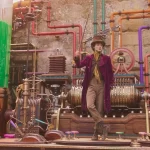Home Video Hovel: The Reptile, by David Bax

John Gilling’s The Reptile, from 1966, is probably not anybody’s idea of the best Hammer horror movie ever but there’s just no denying the, well, Hammerness of it all. It’s got all the Victorian/Gothic trappings, from the gaudily yet somehow still gloomily decorated mansion to the mist-shrouded graveyard. And, more importantly, it’s got a cool monster and a number of grisly deaths.
Harry Spalding (Ray Barrett) and his wife Valerie (Jennifer Daniel) have just moved to a small Cornish village where Harry intends to take up residence in the mansion owned by his recently and mysteriously deceased brother. Though the Spaldings are given a cold welcome by the villagers, Harry does manage to befriend publican Tom Bailey (Michael Ripper) and, more trepidatiously, Dr. Franklyn (Noel Willman), an eccentric man who may know more than he lets on about the death of Harry’s brother and a number of others in the area.
Colonialist xenophobia courses through The Reptile, never more so than in the character of Dr. Franklyn, whose extensive travels in Malaysia have earned him tastes for Eastern cuisine and music that mark him as suspicious in the eyes of Harry, Valerie, Tom and, of course, the audience. At least Gilling and screenwriter Anthony Hinds aren’t coy about Franklyn’s guilt, allowing us to fool ourselves that his predilections are an idiosyncrasy and not a cause or symptom of his malevolence.
Until, that is, the third act reveal that makes an unbreakable connection between Asia and the evil plaguing the village. But the getting there is oh so fun. The costuming and make-up of the creature at the center of the film is suitably creepy and the make-up on the its victims is disturbing. Like many low budget genre films, The Reptile is short on actual ghoulish spectacle and long on atmosphere. The patience and the slow but steady trickle of meaningful information make the movie as much mystery as horror film and the payoff satisfies both genres marvelously.
Scream Factory’s presentation is from an existing HD transfer, available in both 1.66:1 and 1.85:1, but looks great. The colors you want from a Hammer film (a color one, at least) are there and there is no dirt in sight. The mono sound mix is a little low.
Special features include a new audio commentary by film historians Steve Haberman, Constantine Nasr and Ted Newsom; a new interview with first assistant director William P. Cartlidge; a making-of documentary; and a featurette on the “Wicked Women” of Hammer




























